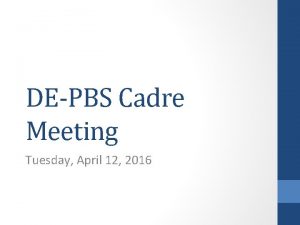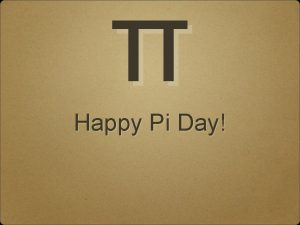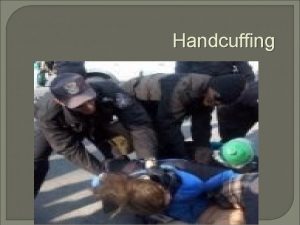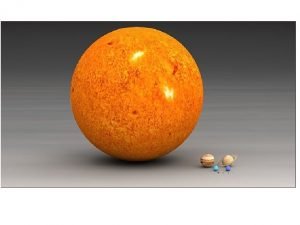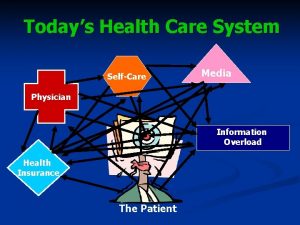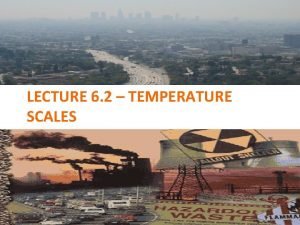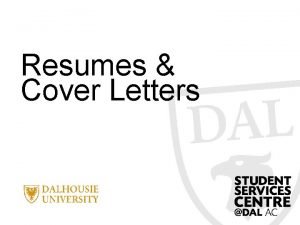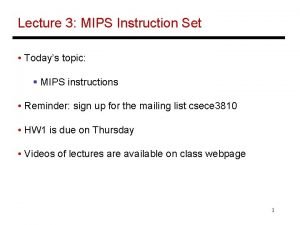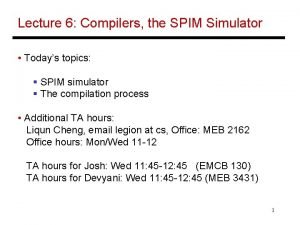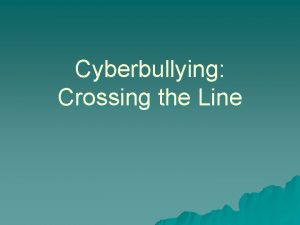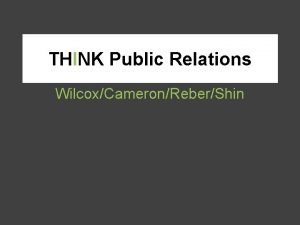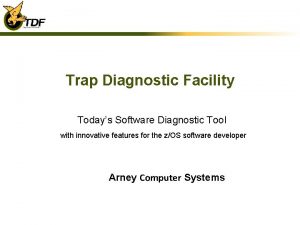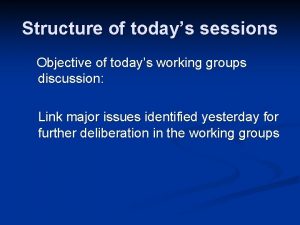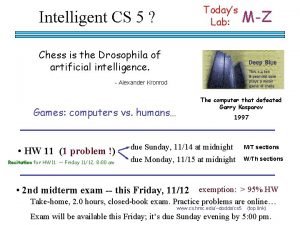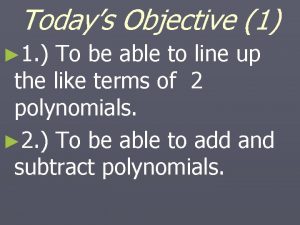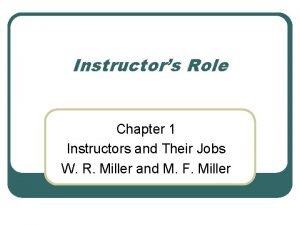Equipping Todays Instructors for Tomorrows Students Academy Conference



















































































- Slides: 83

Equipping Today’s Instructors for Tomorrow’s Students Academy Conference 2013 Cisco Networking Academy What I need to know about IPv 6 to teach CCNA 1 Introduction to Networking/Networking Basics Rick Graziani CS/CIS Instructor Cabrillo College Cisco Networking Academy, US/Canada © 2013 Cisco Systems, Inc. All rights reserved. Cisco confidential. 1

• Rick Graziani - graziani@cabrillo. edu • CS/CIS instructor at Cabrillo College, Santa Cruz, California • Working in IT since 1980 • Cisco Networking Academy instructor since 1997 • Practice what I preach… • Implementing native IPv 6 at Cabrillo College • Home: Run native IPv 6 (& IPv 4) to the Internet • Curriculum Development Team for Cisco Networking Academy • When not working, hopefully I’m surfing. Cisco Networking Academy, US/Canada © 2013 Cisco Systems, Inc. All rights reserved. Cisco confidential. 2

• Why IPv 6? (briefly and quickly) • Format of an IPv 6 Address • IPv 6 Address Types • Global Unicast IPv 6 Address • Link-Local Unicast IPv 6 Address • Multicast IPv 6 Addresses • ICMPv 6 – Neighbor Discovery Protocol • A lot of stuff, but don’t be intimidated! Cisco Networking Academy, US/Canada © 2013 Cisco Systems, Inc. All rights reserved. Cisco confidential. 3

Cisco Networking Academy, US/Canada © 2013 Cisco Systems, Inc. All rights reserved. Cisco confidential. 4

Why are they making me learn IPv 6? Cisco Networking Academy, US/Canada © 2013 Cisco Systems, Inc. All rights reserved. Cisco confidential. 5

• The Internet is more than just connecting people. • At the very least we need IPv 6 for the Internet to continue. • So, the “killer application” for the Internet is the Internet itself. Cisco Networking Academy, US/Canada © 2013 Cisco Systems, Inc. All rights reserved. Cisco confidential. 6

• Monday, January 31, 2011 IANA allocated two blocks of IPv 4 address space to APNIC, the RIR for the Asia Pacific region • This triggered a global policy to allocate the remaining IANA pool of 5 /8’s equally between the five RIRs. • So, basically… Cisco Networking Academy, US/Canada © 2013 Cisco Systems, Inc. All rights reserved. Cisco confidential. 7

Cisco Networking Academy, US/Canada © 2013 Cisco Systems, Inc. All rights reserved. Cisco confidential. “All of this could have all been avoided with IPv 6. ” 8

IPv 4 IPv 6 • IPv 4 and IPv 6 will coexist for the foreseeable future. • Dual-stack – Device running both IPv 4 and IPv 6. Cisco Networking Academy, US/Canada © 2013 Cisco Systems, Inc. All rights reserved. Cisco confidential. 9

Tunneling – IPv 6 packets encapsulated inside IPv 4 packets. NAT 64 – Translating between IPv 4 and IPv 6. Native IPv 6 – All IPv 6 (our focus and the goal of every organization). Cisco Networking Academy, US/Canada © 2013 Cisco Systems, Inc. All rights reserved. Cisco confidential. 10

192. 168. 1. 0/24 RFC 1918 Private Address Public IPv 4 Address • IETF does not support the concept of translating a “private IPv 6” address to a “public” IPv 6 address. • NAT for IPv 4 breaks many things. Cisco Networking Academy, US/Canada © 2013 Cisco Systems, Inc. All rights reserved. Cisco confidential. 11

• IPv 6 is more than just larger address space. • It was a chance to make some improvements on the IP protocol. Cisco Networking Academy, US/Canada © 2013 Cisco Systems, Inc. All rights reserved. Cisco confidential. 12

• Next Header = Protocol field in IPv 4. • Indicates the data payload type (TCP, UDP, ICMPv 6) • Hop Limit = TTL (Time to Live) in IPv 4. • Number of router hops before packet is discarded. • Routers do not fragment IPv 6 packets unless it is the source of the packet. • Use of a Link-Local Address. • ICMPv 6 is more robust than ICMPv 4. • SLAAC (Stateless Address Autoconfiguration) for dynamic addressing. Cisco Networking Academy, US/Canada © 2013 Cisco Systems, Inc. All rights reserved. Cisco confidential. 13

Understanding the format of IPv 6 Address Cisco Networking Academy, US/Canada © 2013 Cisco Systems, Inc. All rights reserved. Cisco confidential. 14

One Hex digit = 4 bits 2001: 0 DB 8: AAAA: 1111: 0000: 0100/64 2001 : 0 DB 8 : AAAA : 1111 : 0000 : 0100 16 bits 1 16 bits 2 16 bits 3 16 bits 4 16 bits 5 16 bits 6 16 bits 7 16 bits 8 § IPv 6 addresses are 128 -bit addresses represented in: § Eight 16 -bit segments or “hextets” (not a formal term) § Hexadecimal (non-case sensitive) between 0000 and FFFF § Separated by colons § Reading and subnetting IPv 6 is easier than IPv 4! Cisco Networking Academy, US/Canada © 2013 Cisco Systems, Inc. All rights reserved. Cisco confidential. 15

2001: 0 DB 8: AAAA: 1111: 0000: 0100/64 2001 : 0 DB 8 : AAAA : 1111 : 0000 : 0100 16 bits 16 bits § How many addresses does 128 bits give us? § 340 undecillion addesses or … § 340 trillion addresses or … § “ 50 billion addresses for every person on earth” or…. § “A string of soccer balls would wrap around our universe 200 billion times!” … in other words … § You won’t need to learn IPv 7 for the next version of CCNA! Cisco Networking Academy, US/Canada © 2013 Cisco Systems, Inc. All rights reserved. Cisco confidential. 16

• Early versions of CCNA included: • IPv 4 • Appletalk • IPX Cisco Networking Academy, US/Canada © 2013 Cisco Systems, Inc. All rights reserved. Cisco confidential. 17

§ Two rules for reducing the size of written IPv 6 addresses. § The first rule is: Leading zeroes in any 16 -bit segment do not have to be written. 2001 : 0 DB 8 : 0001 : 1000 : 0000 : 0 ef 0 : bc 00 2001 : DB 8 : 1 : 1000 : ef 0 : bc 00 2001 : 0 DB 8 : 010 d : 000 a : 00 dd : c 000 : e 000 : 0001 2001 : DB 8 : 10 d : a : dd : c 000 : e 000 : 1 2001 : 0 DB 8 : 0000 : 0000 : 0500 2001 : DB 8 : Cisco Networking Academy, US/Canada 0 : © 2013 Cisco Systems, Inc. All rights reserved. Cisco confidential. 0 : 500 18

§ The second rule can reduce this address even further: § Any single, contiguous string of one or more 16 -bit segments consisting of all zeroes can be represented with a double colon. FE 80 : 0000 : 0000 : 0001 FE 80 : : Second Rule 1 First Rule FE 80: : 1 Cisco Networking Academy, US/Canada © 2013 Cisco Systems, Inc. All rights reserved. Cisco confidential. 19

§ Only a single contiguous string of all-zero segments can be represented with a double colon. § Both of these are correct… FE 80 : 0000 : 0014 : 0000 : 0095 FE 80 : : 14 : 0 : 95 OR FE 80 : Cisco Networking Academy, US/Canada 0 : 14 : : © 2013 Cisco Systems, Inc. All rights reserved. Cisco confidential. 95 20

§ Using the double colon more than once in an IPv 6 address can create ambiguity because of the ambiguity in the number of 0’s. FE 80: : 14: : 95 FE 80: 0000: 0014: 0000: 0095 FE 80: 0000: : 0014: 00000000: 0095 FE 80: 0000: 0014: 0000: 0095 Cisco Networking Academy, US/Canada © 2013 Cisco Systems, Inc. All rights reserved. Cisco confidential. 21

§ IPv 4, the prefix—the network portion of the address—can be identified by a dotted decimal netmask or bitcount. 255. 0 or /24 § IPv 6 prefixes are always identified by bitcount (prefix length). § Prefix length notation: 3 ffe: 1944: 100: a: : /64 16 Cisco Networking Academy, US/Canada 32 48 64 bits © 2013 Cisco Systems, Inc. All rights reserved. Cisco confidential. 22

IPv 6 Addresses Cisco Networking Academy, US/Canada © 2013 Cisco Systems, Inc. All rights reserved. Cisco confidential. 23

IPv 6 Addressing Assigned FF 00: : /8 Global Unicast Link-Local 2000: : /3 3 FFF: : /3 FE 80: : /10 FEBF: : /10 Cisco Networking Academy, US/Canada Anycast Multicast Unicast Solicited Node FF 02: : 1: FF 00: 0000/104 Loopback Unspecified Unique Local : : 1/12 8 : : /128 FC 00: : /7 FDFF: : /7 © 2013 Cisco Systems, Inc. All rights reserved. Cisco confidential. Embedded IPv 4 : : /80 24

Global Unicast IPv 6 Addresses Cisco Networking Academy, US/Canada © 2013 Cisco Systems, Inc. All rights reserved. Cisco confidential. 25

Global Unicast Address (GUA) Global Routing Prefix Subnet ID 001 Range: to 2000: : /3 3 FFF: : /3 • Global unicast addresses are similar to IPv 4 addresses • Routable • Unique Cisco Networking Academy, US/Canada Interface ID 0010 0000 : : 0011 1111 : : IANA’s allocation of IPv 6 address space in 1/8 th sections © 2013 Cisco Systems, Inc. All rights reserved. Cisco confidential. 26

Global Unicast Address (GUA) Global Routing Prefix Subnet ID 001 Range: to 2000: : /3 3 FFF: : /3 Interface ID 0010 0000 : : 0011 1111 : : • Global unicast addresses are equivalent to IPv 4 public addresses • Except under very specific circumstances, all end users will have a global unicast address • Terminology: • Prefix equivalent to network address • Prefix length equivalent to subnet mask in IPv 4 • Interface ID equivalent to host portion Cisco Networking Academy, US/Canada © 2013 Cisco Systems, Inc. All rights reserved. Cisco confidential. 27

Typical Global Unicast Address and Why We Love IPv 6! IPv 4 Unicast Address Network portion /? Subnet portion Host portion 32 bits IPv 6 Global Unicast Address /64 /48 16 -bit Fixed Global Routing Prefix Subnet ID Interface ID 128 bits • 64 -bit Interface ID = 18 quintillion (18, 446, 744, 073, 709, 551, 616) devices/subnet • 16 -bit Subnet ID = 65, 536 subnets Cisco Networking Academy, US/Canada © 2013 Cisco Systems, Inc. All rights reserved. Cisco confidential. 28

/64 Global Unicast Addresses and the 3 -1 -4 rule /48 16 bits /64 16 bits Global Routing Prefix Subnet ID 3 16 bits Interface ID 1 4 2001 : 0 DB 8 : AAAA : 1111 : 0000 : 0100 3 + 1 = 4 (/64) : 4 2001: 0 DB 8: AAAA: 1111: 0000: 0100/64 2001: 0 DB 8: AAAA: 1111: : 100/64 Cisco Networking Academy, US/Canada © 2013 Cisco Systems, Inc. All rights reserved. Cisco confidential. 29

§ Just increment by 1 in Hexadecimal: • 2001: 0 DB 8: AAAA: 0000: : /64 • 2001: 0 DB 8: AAAA: 0001: : /64 • 2001: 0 DB 8: AAAA: 0002: : /64 3 -1 -4 Rule • 2001: 0 DB 8: AAAA: 000 A: : /64 § Valid abbreviation is to remove the 3 leading 0’s from the first shown quartet • 2001: 0 DB 8: AAAA: 1: : /64 Cisco Networking Academy, US/Canada © 2013 Cisco Systems, Inc. All rights reserved. Cisco confidential. 30

Subnetting into the Interface ID /112 /48 48 bits 64 bits Global Routing Prefix Subnet ID Prefix Interface ID Subnet-ID Global Routing Prefix 2001 : 0 DB 8 : AAAA : 0000 thru 2001 : 0 DB 8 : AAAA : FFFF Cisco Networking Academy, US/Canada 16 bits Interface ID : 0000 : 0000 : 0001 : 0000 : 0002 : 0000 : FFFF : FFFE : 0000 : FFFF : 0000 © 2013 Cisco Systems, Inc. All rights reserved. Cisco confidential. 31

Subnetting on a nibble boundary /68 /48 48 bits Global Routing Prefix 20 bits 60 bits Subnet ID Interface ID /68 Prefix Subnetting on a nibble (4 bit) boundary makes it easier to list the subnets: /68 /64, /68, /72, etc. 2001: 0 DB 8: AAAA: 0000: : /68 2001: 0 DB 8: AAAA: 0000: 1000: : /68 2001: 0 DB 8: AAAA: 0000: 2000: : /68 through 2001: 0 DB 8: AAAA: FFFF: F 000: : /68 Cisco Networking Academy, US/Canada © 2013 Cisco Systems, Inc. All rights reserved. Cisco confidential. 32

Subnetting within a nibble /70 /48 48 bits Global Routing Prefix 58 bits 22 bits Subnet ID Interface ID /70 Prefix 2001: 0 DB 8: AAAA: 0000: : /70 0000 2001: 0 DB 8: AAAA: 0000: 0400: : /70 0100 2001: 0 DB 8: AAAA: 0000: 0800: : /70 1000 2001: 0 DB 8: AAAA: 0000: 0 C 00: : /70 1100 Four Bits: The two leftmost bits are part of the Subnet-ID, whereas the two rightmost bits belong to the Interface ID. bits Cisco Networking Academy, US/Canada © 2013 Cisco Systems, Inc. All rights reserved. Cisco confidential. 33

Do we need the IPv 6 equivalent to a /30? Debate for the need to use a /127 /48 48 bits Global Routing Prefix 79 bits 1 bit Subnet ID 127 -bit Prefix 1 bit Interface ID • Beyond the scope of CCNA but may be of interest…. • RFC 6164 - Using 127 -Bit IPv 6 Prefixes on Inter-Router Links • Ping-Pong Issue • Neighbor Cache Exhaustion Issue Cisco Networking Academy, US/Canada © 2013 Cisco Systems, Inc. All rights reserved. Cisco confidential. 34

Configuring a Global Unicast Address Global Unicast Manual IPv 6 Address Static Cisco Networking Academy, US/Canada EUI-64 Dynamic IPv 6 Unnumbered Stateless Autoconfiguration DHCPv 6 CCNA or CCNP Routing © 2013 Cisco Systems, Inc. All rights reserved. Cisco confidential. 35

Cisco Networking Academy, US/Canada © 2013 Cisco Systems, Inc. All rights reserved. Cisco confidential. 36

R 1(config)#interface gigabitethernet 0/0 R 1(config-if)#ipv 6 address 2001: db 8: acad: 1: : 1/64 R 1(config-if)#no shutdown R 1(config-if)#exit No space • • Exactly the same as an IPv 4 address only different. No space between IPv 6 address and Prefix-length. IOS commands for IPv 6 are very similar to their IPv 4 counterpart. All 0’s and all 1’s are valid IPv 6 host IPv 6 addresses. Cisco Networking Academy, US/Canada © 2013 Cisco Systems, Inc. All rights reserved. Cisco confidential. 37

R 1(config)#interface gigabitethernet 0/1 R 1(config-if)#ipv 6 address 2001: db 8: acad: 2: : 1/64 R 1(config-if)#no shutdown R 1(config-if)#exit R 1(config)#interface serial 0/0/0 R 1(config-if)#ipv 6 address 2001: db 8: acad: 3: : 1/64 R 1(config-if)#clock rate 56000 R 1(config-if)#no shutdown Cisco Networking Academy, US/Canada © 2013 Cisco Systems, Inc. All rights reserved. Cisco confidential. 38

show running-config command on router R 1# show running-config <output omitted for brevity> interface Gigabit. Ethernet 0/0 no ip address duplex auto speed auto ipv 6 address 2001: DB 8: ACAD: 1: : 1/64 ! Cisco Networking Academy, US/Canada © 2013 Cisco Systems, Inc. All rights reserved. Cisco confidential. 39

show ipv 6 interface brief command on router R 1# show ipv 6 interface brief Gigabit. Ethernet 0/0 [up/up] FE 80: : FE 99: 47 FF: FE 75: C 3 E 0 2001: DB 8: ACAD: 1: : 1 Link-local unicast address Global unicast address • Link-local address automatically created when (before) the global unicast address is. • We will discuss link-local addresses next. Cisco Networking Academy, US/Canada © 2013 Cisco Systems, Inc. All rights reserved. Cisco confidential. 40

PC 1: Static Global Unicast Address 2001: db 8: acad: 1: : 10 64 2001: db 8: acad: 1: : 1 Cisco Networking Academy, US/Canada © 2013 Cisco Systems, Inc. All rights reserved. Cisco confidential. 41

PC 1: Static Global Unicast Address PC 1> ipconfig Windows IP Configuration Ethernet adapter Local Area Connection: Connection-specific DNS Suffix . : IPv 6 Address. . . : 2001: db 8: acad: 1: : 10 Link-local IPv 6 Address. . . : fe 80: : 50 a 5: 8 a 35: a 5 bb: 66 e 1%11 Default Gateway. . : 2001: db 8: acad: 1: : 1 Cisco Networking Academy, US/Canada © 2013 Cisco Systems, Inc. All rights reserved. Cisco confidential. 42

Ping uses ICMPv 6 Echo Request and Echo Reply messages similar to ICMPv 4. PC 1> ping 2001: db 8: acad: 1: : 1 Pinging 2001: db 8: acad: 1: : 1 from 2001: db 8: acad: 1: : 100 with 32 bytes of data: Reply from 2001: db 8: acad: 1: : 1: time=1 ms Ping statistics for 2001: db 8: acad: 1: Packets: Sent = 4, Received = 4, Lost = 0 (0% loss), Approximate round trip times in milli-seconds: Minimum = 1 ms, Maximum = 1 ms, Average = 1 ms PC 1> Cisco Networking Academy, US/Canada © 2013 Cisco Systems, Inc. All rights reserved. Cisco confidential. 43

Global Unicast Manual IPv 6 Address Static Cisco Networking Academy, US/Canada Dynamic IPv 6 Unnumbered Stateless Autoconfiguration DHCPv 6 EUI-64 © 2013 Cisco Systems, Inc. All rights reserved. Cisco confidential. 44

DHCP Server Cisco Networking Academy, US/Canada © 2013 Cisco Systems, Inc. All rights reserved. Cisco confidential. 45

• The Router Advertisement (RA) tells hosts how it will receive IPv 6 Address Information. • Sent periodically by an IPv 6 router or… • When the router receives a Router Solicitation message from a host. Cisco Networking Academy, US/Canada © 2013 Cisco Systems, Inc. All rights reserved. Cisco confidential. 46

R 1(config)# ipv 6 unicast-routing DHCPv 6 Server Router Advertisement/Solicitation Messages • Part of ICMPv 6 (Internet Control Message Protocol for IPv 6) • Router Advertisements are sent by an “IPv 6 router” – ipv 6 unicast-routing command • Forwards IPv 6 Packets • Can be enabled for IPv 6 static and dynamic routing • Sends ICMPv 6 Router Advertisements • Routers can be configured with IPv 6 addresses without being an IPv 6 router Cisco Networking Academy, US/Canada © 2013 Cisco Systems, Inc. All rights reserved. Cisco confidential. 47

• Option 1 and 2: Stateless Address Autconfiguration – DHCPv 6 Server does not maintain state of addresses • Option 3: Stateful Address Configuration – Address received from DHCPv 6 Server DHCPv 6 R 1(config)# ipv 6 unicast-routing DHCPv 6 Server Option 1 “I’m everything you need (Prefix, Prefix-length, Default Gateway)” Option 2 (Discussed in CCNA Switching) RA “Here is my information but you need to get other information such as DNS addresses from a DHCPv 6 server. ” Option 3 (Discussed in CCNA Switching) “I can’t help you. Ask a DHCPv 6 server for all your information. ” Cisco Networking Academy, US/Canada © 2013 Cisco Systems, Inc. All rights reserved. Cisco confidential. 48

2001: DB 8: ACAD: 1: : /64 MAC: 00 -03 -6 B-8 C-E 0 -80 1 Option 1 – RA Message 2 To: FF 02: : 1 (All IPv 6 devices multicast) From: FE 80: : 1 (Link-local address) Prefix: 2001: DB 8: ACAD: 1: : RA Prefix-length: /64 Default Gateway: FE 80: : 1 Prefix: 2001: DB 8: ACAD: 1: : Global Unicast Address: Prefix-length: /64 2001: DB 8: ACAD: 1: + Interface ID 3 DHCPv 6 Server Cisco Networking Academy, US/Canada EUI-64 Process or Random 64 -bit value © 2013 Cisco Systems, Inc. All rights reserved. Cisco confidential. 49

Router Advertisement 2001: DB 8: ACAD: 1: : /64 DHCPv 6 Server /48 /64 Global Routing Prefix Subnet ID 64 bits Interface ID SLAAC EUI-64 Process Randomly Generated Number • Windows operating systems, Windows XP and Server 2003 use EUI-64. • Windows Vista and newer; hosts create a random 64 -bit Interface ID. • Linux: Mostly use random 64 -bit number • Mac OSX: use EUI-64 (on my Macs) Cisco Networking Academy, US/Canada © 2013 Cisco Systems, Inc. All rights reserved. Cisco confidential. 50

2001: DB 8: ACAD: 1: : /64 MAC: 00 -03 -6 B-E 9 -D 4 -80 1 Option 1 – RA Message To: 2 FF 02: : 1 (All-hosts multicast) From: FE 80: : 1 (Link-local address) RA Prefix: 2001: DB 8: ACAD: 1: : Prefix-length: /64 Default Gateway: FE 80: : 1 Prefix-length: /64 Global Unicast Address: 2001: DB 8: ACAD: 1: + Interface ID DHCPv 6 Server Cisco Networking Academy, US/Canada EUI-64 Process or Random 64 -bit value © 2013 Cisco Systems, Inc. All rights reserved. Cisco confidential. 51

OUI 24 bits Hexadecimal 00 Device Identifier 24 bits 03 6 B E 9 D 4 80 1110 1001 1101 0100 1000 0000 Step 1: Split the MAC address Binary 0000 0011 0110 1011 F F Step 2: Insert FFFE Binary 0000 0011 F E 0110 1011 1111 1111 1110 1001 1101 0100 1000 0000 FE E 9 D 4 80 Step 3: Flip the U/L bit Binary 0000 0010 0000 0011 Modified EUI-64 Interface ID in Hexadecimal Notation Binary Cisco Networking Academy, US/Canada 02 03 6 B FF © 2013 Cisco Systems, Inc. All rights reserved. Cisco confidential. 52

PC 1: Global Unicast Address Router Advertisement EUI-64 PC 1> ipconfig Windows IP Configuration Ethernet adapter Local Area Connection: Connection-specific DNS Suffix . : IPv 6 Address. . . : 2001: db 8: acad: 1: 02 -03 -6 b-ff-fe-e 9 -d 4 -80 Link-local IPv 6 Address. . . : fe 80: : 02 -03 -6 b-ff-fe-e 9 -d 4 -80 Default Gateway. . : fe 80: : 1 • A 64 -bit Interface ID and the EUI-64 process accommodate the IEEE specification for a 64 -bit MAC address. Cisco Networking Academy, US/Canada © 2013 Cisco Systems, Inc. All rights reserved. Cisco confidential. 53

• DHCPv 6 is similar to DHCPv 6 DHCPv 4. • Host operating systems DHCPv 6 Server “may” include the option of ignoring the Router Advertisement from the router and only use the stateful services of a DHCPv 6 server. • Note: All addresses should be checked before use with DAD (Duplicate Address Detection), similar to gratuitous ARP in IPv 4. Cisco Networking Academy, US/Canada © 2013 Cisco Systems, Inc. All rights reserved. Cisco confidential. 54

Link-Local Unicast IPv 6 Addresses Cisco Networking Academy, US/Canada © 2013 Cisco Systems, Inc. All rights reserved. Cisco confidential. 55

IPv 6 Addressing Assigned FF 00: : /8 Global Unicast Link-Local 2000: : /3 3 FFF: : /3 FE 80: : /10 FEBF: : /10 Cisco Networking Academy, US/Canada Anycast Multicast Unicast Solicited Node FF 02: : 1: FF 00: 0000/104 Loopback Unspecified Unique Local : : 1/12 8 : : /128 FC 00: : /7 FDFF: : /7 © 2013 Cisco Systems, Inc. All rights reserved. Cisco confidential. Embedded IPv 4 : : /80 56

Link-local Unicast 10 bits 1111 1110 10 xx xxxx FE 80: : /10 Range: to FE 80: : /10 FEBF: : /10 Cisco Networking Academy, US/Canada Remaining 54 bits 64 bits /64 Interface ID EUI-64, Random or Manual Configuration 1111 1110 1000 0000 : : 1111 1110 1011 1111 : : © 2013 Cisco Systems, Inc. All rights reserved. Cisco confidential. 57

Link-local unicast Link-Local Communications • • • Used to communicate with other devices on the link. Are NOT routable off the link (network). Only have to be unique on the link. Are not included in the IPv 6 routing table. An IPv 6 device must have at least a link-local address. Used by: • Hosts to communicate to the IPv 6 network before it has a global unicast address. • Router’s link-local address is used by hosts as the default gateway address. • Adjacent routers to exchange routing updates Cisco Networking Academy, US/Canada © 2013 Cisco Systems, Inc. All rights reserved. Cisco confidential. 58

G 0/0 G 0/1 Wait!S 0/0/0 Two Link R 1 -Locals are the same! R 1#show interface gigabitethernet 0/0 Gigabit. Ethernet 0/0 is up, line protocol is up Hardware is CN Gigabit Ethernet, address is fc 99. 4775. c 3 e 0 (bia fc 99. 4775. c 3 e 0) <Output Omitted> R 1#show ipv 6 interface brief Gigabit. Ethernet 0/0 [up/up] FE 80: : FE 99: 47 FF: FE 75: C 3 E 0 2001: DB 8: ACAD: 1: : 1 Gigabit. Ethernet 0/1 [up/up] FE 80: : FE 99: 47 FF: FE 75: C 3 E 1 2001: DB 8: ACAD: 2: : 1 Serial 0/0/0 [up/up] FE 80: : FE 99: 47 FF: FE 75: C 3 E 0 2001: DB 8: ACAD: 3: : 1 R 1# Cisco Networking Academy, US/Canada EUI-64 FF: FE = EUI-64 (most likely) Serial interfaces will use a MAC address of an Ethernet interface. © 2013 Cisco Systems, Inc. All rights reserved. Cisco confidential. 59

PC 1: Link-Local Unicast Address PC 1> ipconfig Windows IP Configuration Ethernet adapter Local Area Connection: Connection-specific DNS Suffix . : IPv 6 Address. . : 2001: db 8: acad: 1: 3496: 1 c 51: 3 f 57: fe 89 Link-local IPv 6 Address. . . : fe 80: : 3496: 1 c 51: 3 f 57: fe 89 Default Gateway. . . . : fe 80: : 1 • Many operating systems will use a random 64 -bit Interface IDs for GUA and Link- Local IPv 6 Addresses. Cisco Networking Academy, US/Canada © 2013 Cisco Systems, Inc. All rights reserved. Cisco confidential. 60

Static addresses are more easily remembered and recognizable. R 1(config)#interface gigabitethernet 0/0 R 1(config-if)#ipv 6 address fe 80: : 1 ? link-local Use link-local address G 0/0 FE 80: : 1 G 0/1 R 1 FE 80: : 1 R 1(config-if)#ipv 6 address fe 80: : 1 link-local R 1(config-if)#exit R 1(config)#interface gigabitethernet 0/1 R 1(config-if)#ipv 6 address fe 80: : 1 link-local R 1(config-if)#exit R 1(config)#interface serial 0/0/0 R 1(config-if)#ipv 6 address fe 80: : 1 link-local R 1(config-if)# Cisco Networking Academy, US/Canada © 2013 Cisco Systems, Inc. All rights reserved. Cisco confidential. S 0/0/0 FE 80: : 1 Link-Local Addresses only have to be unique on the link! 61

ipv 6 enable command Router(config)# interface gigabitethernet 0/1 Router(config-if)# ipv 6 enable Router(config-if)# end Router# show ipv 6 interface brief Gigabit. Ethernet 0/1 [up/up] Link-local unicast address FE 80: : 20 C: 30 FF: FE 10: 92 E 1 only Router# • Link-local addresses are automatically created whenever a global unicast address is configured • The ipv 6 enable command will: • • Create a link-local address when there is no global unicast address Maintain the link-local address even when the global unicast address is removed Cisco Networking Academy, US/Canada © 2013 Cisco Systems, Inc. All rights reserved. Cisco confidential. 62

R 1 2001: 0 DB 8: ACAD: 1: : /64 FE 80: : 1 G 0/0 FE 80: : 1 FE 80: : 2 Ser 0/0/0 : 1 Ser 0/0/0 : 2 R 2 2001: 0 DB 8: ACAD: 2: : /64 R 1# ping fe 80: : 2 Output Interface: ser 0/0/0 Must include exit-interface % Invalid interface. Use full interface name without spaces (e. g. Serial 0/1) Output Interface: serial 0/0/0 Type escape sequence to abort. Sending 5, 100 -byte ICMP Echos to FE 80: : 2, timeout is 2 secs: !!!!! Cisco Networking Academy, US/Canada © 2013 Cisco Systems, Inc. All rights reserved. Cisco confidential. 63

Multicast IPv 6 Addresses Cisco Networking Academy, US/Canada © 2013 Cisco Systems, Inc. All rights reserved. Cisco confidential. 64

IPv 6 Addressing Assigned FF 00: : /8 Cisco Networking Academy, US/Canada Anycast Multicast Unicast Solicited Node FF 02: : 1: FF 00: 0000/104 © 2013 Cisco Systems, Inc. All rights reserved. Cisco confidential. 65

8 bits 4 bits 112 bits Group ID 1111 Flag Scope FF 00: : /8 • Similar to Multicast addresses for IPv 4. • Used to send a packet to a group of devices. Two types: 1. Assigned 2. Solicited Node Cisco Networking Academy, US/Canada © 2013 Cisco Systems, Inc. All rights reserved. Cisco confidential. 66

• FF 02: : 1 – All IPv 6 Devices • All IPv 6 devices, including the router, belong to this group. • Every IPv 6 device will listen and process packets to this address. Cisco Networking Academy, US/Canada © 2013 Cisco Systems, Inc. All rights reserved. Cisco confidential. 67

FE 80: : 0123: 456: 789 A: BCDE FF 02: : 2 R 1(config)# ipv 6 unicast-routing • FF 02: : 2 – All IPv 6 Routers • All IPv 6 routers belong to this group. • Used to communicate with an IPv 6 Router (ipv 6 unicast routing) Cisco Networking Academy, US/Canada © 2013 Cisco Systems, Inc. All rights reserved. Cisco confidential. 68

R 1# show ipv 6 interface gigabitethernet 0/0 Fast. Ethernet 0/0 is up, line protocol is up IPv 6 is enabled, link-local address is FE 80: : FE 99: 47 FF: FE 75: C 3 E 0 Global unicast address(es): 2001: DB 8: ACAD: 1: : 1, subnet is 2001: DB 8: ACAD: 1: : /64 Joined group address(es): Member of these Multicast Groups FF 02: : 1 All-IPv 6 devices on this link FF 02: : 2 All-IPv 6 routers on this link: IPv 6 routing enabled FF 02: : 1: FF 00: 1 Solicited-node multicast address for Global Address FF 02: : 1: FF 75: C 3 E 0 Solicited-node multicast address for Link-local Unicast <output omitted for brevity> Address • FF 02 – “ 2” means link-local scope • What is Solicited node? Cisco Networking Academy, US/Canada © 2013 Cisco Systems, Inc. All rights reserved. Cisco confidential. 69

PC 1 Destination: Solicited-node Multicast “Who ever has the IPv 6 address 2001: DB 8: ACAD: 1: : 10 please send me your Ethernet MAC address” PC 2 Solicited Node Multicast Address • Used as a destination address when don’t know the unicast address. • Typically used as the destination IPv 6 address with: • Address Resolution (“IPv 4 ARP”) • Duplicate Address Detection (“Gratuitous ARP”) • Same intent as a broadcast but more efficient. • Devices process packets with their solicited node multicast address as the destination address: IP and MAC. Cisco Networking Academy, US/Canada © 2013 Cisco Systems, Inc. All rights reserved. Cisco confidential. 70

Global Unicast Address Global Routing Prefix Interface ID Subnet ID 24 bits 104 bits 2001: 0 DB 8: ACAD 0001 0000: 0010 Copy Solicited-Node Multicast Address 104 bits FF 02 0000 0001 The ugly FF The last 24 bits match. 00: 0010 The simple IPv 6 Global Unicast Address: 2001: 0 DB 8: ACAD: 0001: 0000: 0010 IPv 6 Solicited Node Multicast Address: FF 02: : 1: FF 00: 0010 Cisco Networking Academy, US/Canada © 2013 Cisco Systems, Inc. All rights reserved. Cisco confidential. 71

• All IPv 6 Devices Multicast: FF 02: : 1 I listen for several IPv 6 addresses! • Link-Local Address: FE 80: : 02 -03 -6 B-FF-FE-8 C-E 0 -80 • Global Unicast Address: 2001: DB 8: ACAD: 1: : 10 • Solicited Node Multicast Address: FF 02: : 1: FF 00: 0010 PC 1 Destination: Solicited-node Multicast PC 2 FF 02: : 1: FF 00: 0010 “Who ever has the IPv 6 address 2001: DB 8: ACAD: 1: : 10 please send me your Ethernet MAC address” Note (beyond CCNA): Solicited Node Multicast addresses are also mapped to a special multicast MAC address: 33 -33 -FF-00 -00 -10 Cisco Networking Academy, US/Canada © 2013 Cisco Systems, Inc. All rights reserved. Cisco confidential. 72

A Brief look at ICMPv 6 (Internet Control Message Protocol for IPv 6) Cisco Networking Academy, US/Canada © 2013 Cisco Systems, Inc. All rights reserved. Cisco confidential. 73

IPv 6 Next Header Value: 58 decimal or 3 A hexadecimal Next Header 58 IPv 6 Header ICMPv 6 Message Body IPv 6 Data • Described in RFC 4443 • Much more robust than ICMP for IPv 4 • Contains new functionality and improvements. • More than just “messaging” but “how IPv 6 conducts business”. • General message similar to ICMP for IPv 4 • Also uses Type and Code fields like in ICMPv 4. Cisco Networking Academy, US/Canada © 2013 Cisco Systems, Inc. All rights reserved. Cisco confidential. 74

• ICMPv 6 informational messages used by Neighbor Discovery (RFC 4861): • Router Solicitation Message • Router Advertisement Message Router-Device Messaging • Neighbor Solicitation Message • Neighbor Advertisement Message Device-Device Messaging • Redirect Message (Similar to ICMPv 4) Cisco Networking Academy, US/Canada © 2013 Cisco Systems, Inc. All rights reserved. Cisco confidential. 75

Used by SLAAC (Stateless Address Autoconfiguration) 1 FF 02: : 2 All IPv 6 Routers Router Solicitation Message I need IPv 6 address information. PC 1 DHCPv 6 Server Router Advertisement Message Here is one of three options: 1. I have everything you need. 2. I have mostly what you need, but you will need to contact a DHCPv 6 server for other information like a DNS address. 3. I have nothing for you. Contact a DHCPv 6 serverl Cisco Networking Academy, US/Canada 2 FF 02: : 1 All IPv 6 Devices © 2013 Cisco Systems, Inc. All rights reserved. Cisco confidential. 76

PC 2 Neighbor Solicitation Message Whoever has the IPv 6 Address 2001: DB 8: ACAD: 1: : 10 please send me your Ethernet MAC address. 2 Unicast 1 Solicited Node Multicast PC 1 Neighbor Advertisement Message I have the IPv 6 Address 2001: DB 8: ACAD: 1: : 10. Here is my Ethernet MAC address: 0021: 9 bd 9: c 644. • Address Resolution - A device knows the IPv 6 address but needs the Layer 2 MAC address. • Unlike ARP, ICMPv 6 Neighbor Solicitation/Advertisement messages are encapsulated in IPv 6. • Information is stored in the Neighbor Cache. © 2013 Cisco Systems, Inc. All rights reserved. Cisco confidential. Cisco Networking Academy, US/Canada 77

Neighbor Cache IPv 6 Address MAC Address 2001: DB 8: ACAD: 1: : 10 0021. 9 bd 9. c 644 PC 1 IPv 6 - 2001: DB 8: ACAD: 1: : 10 MAC - 0021. 9 bd 9. c 644 • Neighbor Cache – Maps IPv 6 addresses with Ethernet MAC addresses • Similar to ARP Cache for IPv 4 • 5 States (2 noticeable and 3 transitory): • Reachable: Packets have recently been received providing confirmation that this device is reachable. • Stale: A certain time period has elapsed since a packet has been received from this address. • Transitory States: INCOMPLETE, DELAY, PROBE (I will point you to more information) Cisco Networking Academy, US/Canada © 2013 Cisco Systems, Inc. All rights reserved. Cisco confidential. 78

Windows: netsh interface ipv 6 show neighbor Linux/MAC: ip neighbor show R 1# show ipv 6 neighbors IPv 6 Address Age Link-layer Addr State Interface FE 80: : 50 A 5: 8 A 35: A 5 BB: 66 E 1 16 0021. 9 bd 9. c 644 STALE Fa 0/0 2001: DB 8: ACAD: 1: : 10 16 0021. 9 bd 9. c 644 STALE Fa 0/0 R 1# ping 2001: db 8: aaaa: 1: : 100 Type escape sequence to abort. Sending 5, 100 -byte ICMP Echos to 2001: DB 8: AAAA: 1: : 100, timeout is 2 seconds: !!!!! Success rate is 100 percent (5/5), round-trip min/avg/max = 1/1/1 ms R 1# show ipv 6 neighbors IPv 6 Address Age Link-layer Addr State Interface FE 80: : 50 A 5: 8 A 35: A 5 BB: 66 E 1 16 0021. 9 bd 9. c 644 STALE Fa 0/0 2001: DB 8: ACAD: 1: : 10 0 0021. 9 bd 9. c 644 REACH Fa 0/0 R 1# Cisco Networking Academy, US/Canada © 2013 Cisco Systems, Inc. All rights reserved. Cisco confidential. 79

• Why IPv 6? (briefly and quickly) • Format of an IPv 6 Address • IPv 6 Address Types • Global Unicast IPv 6 Address • Link-Local Unicast IPv 6 Address Teach it and use it, and it will all make sense! • Multicast IPv 6 Addresses • ICMPv 6 – Neighbor Discovery Protocol Cisco Networking Academy, US/Canada © 2013 Cisco Systems, Inc. All rights reserved. Cisco confidential. 80

• Chapter 1: Routing Concepts • Chapter 2: Static Routing • Chapter 3: Routing Dynamically • Chapter 4: EIGRP • Chapter 5: Advanced EIGRP • Chapter 6: Single Area OSPF • Chapter 7: Advanced Single Area OSPF • Chapter 8: Multi-Area OSPF • Chapter 9: Access Control Lists • Chapter 10: IOS File Management Cisco Networking Academy, US/Canada © 2013 Cisco Systems, Inc. All rights reserved. Cisco confidential. 81

Shameless plug! • Rick Graziani - graziani@cabrillo. edu • Power. Points for CCNA, CCNP, IPv 6 • www. cabrillo. edu/~rgraziani • Username = cisco • Password = perlman Quality time with my two nieces… Cisco Networking Academy, US/Canada © 2013 Cisco Systems, Inc. All rights reserved. Cisco confidential. 82

Rick Graziani - graziani@cabrillo. edu www. cabrillo. edu/~rgraziani Username = cisco Password = perlman Cisco Networking Academy, US/Canada © 2013 Cisco Systems, Inc. All rights reserved. Cisco confidential. 83
 Chapter 21 equipping the kitchen
Chapter 21 equipping the kitchen Planning alternative tomorrows with hope
Planning alternative tomorrows with hope All tomorrows mbti
All tomorrows mbti Planning alternative tomorrows with hope
Planning alternative tomorrows with hope Tomorrow's technology and you
Tomorrow's technology and you Planning alternative tomorrows with hope
Planning alternative tomorrows with hope Tomorrows doctors
Tomorrows doctors The cone of experience
The cone of experience Rizal salute to luna and hidalgo
Rizal salute to luna and hidalgo Todays plan
Todays plan Todays concept
Todays concept Olongman
Olongman Safe online talk
Safe online talk Todays generations
Todays generations Standing handcuffing techniques
Standing handcuffing techniques Todays planetary position
Todays planetary position Cell organelle jeopardy
Cell organelle jeopardy Todays health
Todays health Todays class com
Todays class com Todays science
Todays science Good morning greeting teacher
Good morning greeting teacher Define radient energy
Define radient energy Todays objective
Todays objective Todays whether
Todays whether Todays sabbath lesson
Todays sabbath lesson Whats todays temperature
Whats todays temperature Todays class
Todays class Objective on resume
Objective on resume Mla cover page format
Mla cover page format Today class or today's class
Today class or today's class Todays weather hull
Todays weather hull How to identify simile
How to identify simile Whats todays wordlw
Whats todays wordlw Judith kuster
Judith kuster Todays jeopardy
Todays jeopardy Todays objective
Todays objective Swine digestive system
Swine digestive system Todays globl
Todays globl Todays vision
Todays vision Objective of cyberbullying
Objective of cyberbullying Todays sabbath lesson
Todays sabbath lesson Todays jeopardy
Todays jeopardy Clients often criticize public relations firms for
Clients often criticize public relations firms for Todays agenda
Todays agenda Multiple choice comma quiz
Multiple choice comma quiz Todays objective
Todays objective Todays objective
Todays objective Chapter 13 marketing in todays world
Chapter 13 marketing in todays world Geographic regions final jeopardy
Geographic regions final jeopardy Todays software
Todays software For todays meeting
For todays meeting Todays objective
Todays objective Todays final jeopardy
Todays final jeopardy Todays objective
Todays objective Todays lab
Todays lab Todays final jeopardy question
Todays final jeopardy question Walsall rugby
Walsall rugby Todays price of asda shares
Todays price of asda shares Todays jeopardy
Todays jeopardy Todays worldld
Todays worldld Date frui
Date frui Todays objective
Todays objective Redogör för vad psykologi är
Redogör för vad psykologi är Lek med former i förskolan
Lek med former i förskolan Bästa kameran för astrofoto
Bästa kameran för astrofoto Offentlig förvaltning
Offentlig förvaltning Dikt bunden form
Dikt bunden form Etik och ledarskap etisk kod för chefer
Etik och ledarskap etisk kod för chefer Mantel som bars av kvinnor i antikens rom
Mantel som bars av kvinnor i antikens rom Tidbok yrkesförare
Tidbok yrkesförare Kontinuitetshantering
Kontinuitetshantering Vilken grundregel finns det för tronföljden i sverige?
Vilken grundregel finns det för tronföljden i sverige? Bamse för de yngsta
Bamse för de yngsta Ministerstyre för och nackdelar
Ministerstyre för och nackdelar Sju principer för tillitsbaserad styrning
Sju principer för tillitsbaserad styrning Plats för toran ark
Plats för toran ark Boverket ka
Boverket ka Nyckelkompetenser för livslångt lärande
Nyckelkompetenser för livslångt lärande Romarriket tidslinje
Romarriket tidslinje Shingelfrisyren
Shingelfrisyren Vad är verksamhetsanalys
Vad är verksamhetsanalys Gibbs reflekterande cykel
Gibbs reflekterande cykel Stål för stötfångarsystem
Stål för stötfångarsystem Centrum för kunskap och säkerhet
Centrum för kunskap och säkerhet



